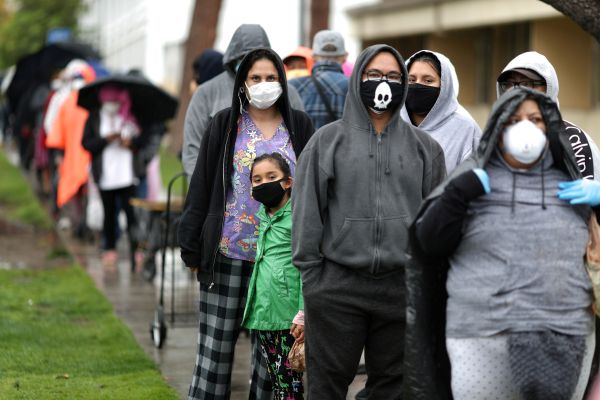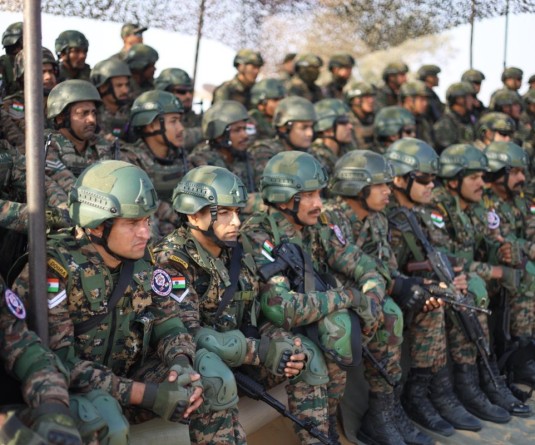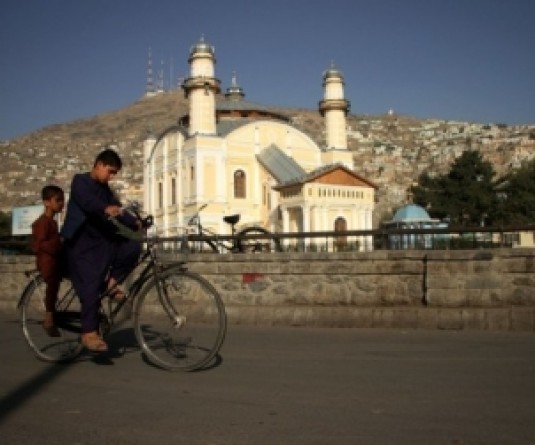1

People queue to pick up fresh food at a Los Angeles Regional Food Bank giveaway of 2,000 boxes of groceries, as the spread of the coronavirus disease (COVID-19) continues, in Los Angeles, California, US on April 9, 2020. (REUTERS File Photo)
Reuters
It’s pitch black in El Paso, Texas, when the minivans and pickups start lining up at 4 a.m., snaking for more than a mile down the desert roadway leading to the city’s largest food bank.
When rations are finally distributed five hours later, many boxes are filled with too many castoff beefsteak tomatoes but no pasta. Nor is there any rice, beans or other dry or canned goods.
“We really have no dry goods,” said Bonnie Escobar, chief development officer of El Pasoans Fighting Hunger.
Food banks nationwide are squeezed between short supplies and surging demand from needy families as the coronavirus pandemic has put more than 26 million Americans out of work. In New York City, the mayor appointed a food czar as lines of masked people form outside overstretched charities. More than a third of the city’s food banks have closed for lack of supplies, donations or volunteers, who are harder to recruit because of infection fears, according to the New York Mission Society. In San Diego, a local food bank waits on a $1 million order it placed weeks ago. Chicago and Houston food banks say they are nearly out of staples.
Before the pandemic, 1 in 7 Americans relied on food banks, according to Feeding America, a national network of the charities. Now, demand has doubled or tripled at many organizations, U.S. food bank operators told Reuters.
And yet farmers are destroying produce, dumping milk and culling livestock because the pandemic has upended supply chains, making it impossible for many to get crops to market. Grocery stores struggle to stock shelves because suppliers can’t adjust to the sudden shift of demand away from shuttered restaurants to retailers, which requires different packaging and distribution networks.
“The U.S. likely has a surplus of food right now,” said Keith Dailey, group vice president of corporate affairs at Kroger Co, the No. 1 U.S. supermarket operator. “It’s just hard to recover and redistribute.”
Before the pandemic, Feeding America member organizations received about a third of their food from grocery store programs that “rescue” fresh food and dry goods that are imperfect or close to expiration. Almost a quarter came from government programs that provide meat, cheese and other products. The rest came through donations from farmers and grocers and purchases by the food banks.
Now those supply lines are disrupted. Panic-buying of groceries stripped store inventories of often-donated surplus items, causing grocers to shift to cash donations for food banks. Surging demand from needy families, along with higher prices on some products, is busting food banks’ cash budgets - one Nebraska food bank, for instance, will spend up to $1 million on food in April compared to about $70,000 in a normal month.
“This is not an anomaly” across the region, said Angie Grote, a spokeswoman for Omaha’s Food Bank for the Heartland, which serves communities in 93 counties in Nebraska and Western Iowa.
Many farmers would rather donate food than destroy it, but overwhelmed charities do not have the labor or storage to handle such bulk donations. Neither can the government act fast enough to fill the gap left by disruptions of other sources and the sudden spike in hunger.
The Trump administration faces mounting pressure from trade groups such as the National Pork Producers Council and the National Potato Council to buy more surplus foods and redirect them to charities or schools that continue to provide meals to low-income families after halting classes. That could include, for instance, between $750 million and $1.3 billion worth of potatoes and derivative products that are trapped in the pipeline, the potato council said.
But U.S. Agriculture Department regulations can pose problems in redirecting food from restaurants to charities. The USDA has strict specifications on products that can be purchased for food banks, allowing only certain cuts of meat that are packaged in certain size boxes, said Dallas Hockman, vice president of industry relations for the National Pork Producers Council.
The pork trade group requested that the USDA ease such rules to speed the flow of food to needy families, Hockman said. It normally takes one to three months for the USDA to receive food after a company wins a government contract to provide it for distribution to charities.
Meanwhile, bulk packages of ham and bacon that would normally go to restaurants are sitting in cold storage.
"What we're saying is, for right now, go buy this stuff, get it out of the pipeline and get it to these food banks," Hockman said.
The agency did not directly answer questions from Reuters about the concerns that it moved too slowly to address the food bank crisis or suggestions that it relax regulations. The agency repeated a pledge it made in a news conference on April 17 to spend $3 billion in food purchases for its newly announced Coronavirus Food Assistance Program, with monthly $300 million purchases through February 2021. In a call with food distributors Thursday, USDA representatives said the new program could deliver food more quickly than usual and that it expected to begin deliveries to charities by mid-May.
FEAST, THEN FAMINE
Less than a year ago, food banks were overwhelmed by a glut of food from the USDA. The administration’s Trade Mitigation program bought billions of dollars in food from U.S. growers who saw their export markets - especially China - cut off in the tariff war started by President Donald Trump in 2018.
The excess prompted the Greater Chicago Food Depository to build extra cold storage for milk and meat. Today, that storage has been emptied, and food banks are scrambling to buy increasingly scarce and expensive staples, such as canned fruit or peanut butter.
Some items are no longer available or require two-month waits for delivery, said Greg Trotter, a spokesman for the Chicago food bank. “Food manufacturers have struggled to keep up with demand” from grocery consumers, he said, “and are therefore selling less food directly to food banks.”
As supplies tighten, demand soars. The Jacobs & Cushman San Diego Food Bank saw the number of people it fed jump from 350,000 to 600,000 in a month, said CEO James A. Floros. A similar demand spike hit Fresno's Central California Food Bank, in the heart of the state's Central Valley - which supplies a quarter of the nation's food, including tomatoes, vegetables, nuts, tree fruits and table grapes.
Restaurant closures were a double hit - putting furloughed workers in the food line and reducing donations from grocers whose shelves were picked clean.
The state’s food-service distributors have scrambled to empty warehouses of bulk products like 50-lb bags of carrots or 21-lb grape bunches that had been destined for restaurants, airlines or cruise ships. Many would donate them, but food banks can’t handle the packages.
"We don't have the ability to unpack it and repack it in family size," said Kym Dildine, the Central California Food Bank’s chief administrative officer.
Neither do the charities have the storage, trucks, labor or processing facilities needed to accept and distribute large donations of produce from farmers. When one local farmer recently offered a million heads of lettuce, Dildine could only take a small portion.
Monica White, CEO of Food Share of Ventura County, said the organization has had similar difficulties accepting bulk produce.
“It’s like asking Tesla to start building gas cars,” she said.
About 300 miles away, in Holtville, California, farmer Jack Vessey had to destroy a crop of fresh-cut romaine lettuce after failing to find a charity to take it.
TAKING ACTION
Jon Samson, an executive director at the American Trucking Association, has been frustrated with the juxtaposition of news images of long food-bank lines with those of farmers destroying food. Over Easter weekend he started pulling together a list of food-industry representatives he believed could get perishable foods to the needy.
The working group of about 80 members includes representatives of trade groups such as the American Farm Bureau Federation and the National Restaurant Association, charities including Feeding America and distribution experts such as the American Logistics Aid Network, or ALAN.
ALAN has already coordinated an International Paper Co donation of about 45,000 empty boxes to Salvation Army food distribution centers in several states. Samson's group is considering other efforts including breaking down bulk food packages and freezing or canning goods from food factories.
“We've got the product, we've got the truck and warehouse capacity, and we've got the consumer,” Samson said. “The problem is linking all of that together."
Food banks are scrambling to adjust, too. Operators in seven cities are borrowing refrigerated trailers from food-service distributor Sysco. In California, Ventura County’s food bank and local partners are bottling orange juice that would have been dumped.
The San Diego food bank ordered a $500,000 machine to repackage bulk supplies of staples like beans and rice into individual family packs.
“Should COVID-19 come back later in the year,” said Floros, “we’ll be ready for it.”






